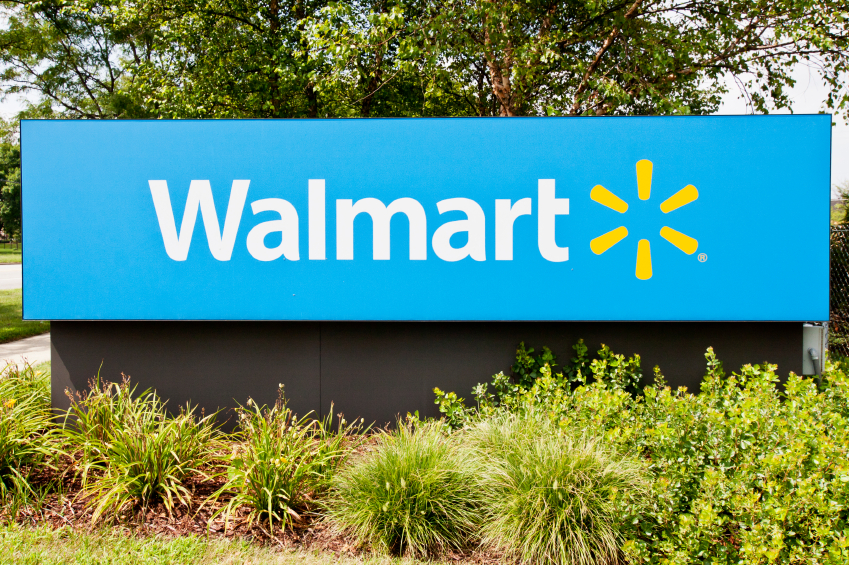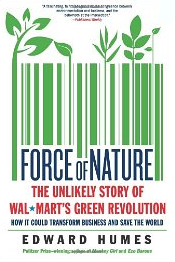 Walmart’s effort to green its stores, trucking fleet, products, and supply chain, alternately dismissed from the left as window dressing and from the right as a costly distraction, has accomplished something that 40 years of environmental activism and regulation never managed: It moved sustainability from the fringe to the forefront of business concerns.
Walmart’s effort to green its stores, trucking fleet, products, and supply chain, alternately dismissed from the left as window dressing and from the right as a costly distraction, has accomplished something that 40 years of environmental activism and regulation never managed: It moved sustainability from the fringe to the forefront of business concerns.
Incomplete and imperfect as they may be, Walmart’s sustainability endeavors have yielded some notable reductions in waste, energy consumption, packaging, and greenhouse gas emissions. But their real significance is less about specific tons of carbon sucked from the company’s footprint or the proportion of its seafood that’s eco-certified (73 percent), and more about the attitudinal sea change represented by putting profit and planet on the same side of the corporate ledger sheet. It reflects a business-friendly view of environmentalism that turns the tables on the drill-baby-drill crowd by asserting — and proving — that sustainable choices can help America prosper and compete.
Walmart was persuaded in 2004 by an outside consultant (a tree-hugging river guide, no less) to begin thinking of sustainability not as a cost and a risk, but as a business opportunity. Back then, this was radical crazy talk in Bentonville. Yet that was the pitch from Jib Ellison, founder of Blu Skye Sustainability Consultants: that the clean, green, less wasteful way of doing business could be the most profitable way even (or especially) in hard times. Walmart’s CEO at the time, H. Lee Scott, responded with a challenge: Prove it. That challenge in effect turned the retail giant into an unlikely laboratory to test the business case for sustainability.
In one of Ellison’s first test cases, Walmart shaved a few inches off the cardboard packaging of a toy truck it sold by the millions. Over the course of one year, this saved 4,000 trees, eliminated the need for 497 shipping-container loads, and saved a million gallons of oil in getting the products from China to Walmart shelves. That led to $2.4 million in savings for the retailer. Walmart would have to sell $60 million in toys to earn that same amount in profits.
A few more successes like that — from installing fuel-saving auxiliary power units in diesel-hogging big rigs to replacing waxed chicken boxes in the grocery department with recyclable alternatives — and the idea of a more sustainable Walmart went viral. Walmart managers and divisions began competing with one another on green initiatives. Some of the results:
- Since 2005, Walmart has lowered the carbon footprint of its stores by more than 10 percent and its trucking fleet by several times as much. The idea that lowering carbon emissions amounts to lowering costs has become a given at the company, which is why Walmart executives have repeatedly testified before Congress in favor of climate legislation.
- The retailer is showing its suppliers in China and the U.S. how to lower their carbon emissions and energy bills by 20 to 60 percent. The effort has cut emissions and energy use at 119 Chinese factories so far, with help from the Environmental Defense Fund.
- Packaging reduction has saved hundreds of millions in shipping and materials costs as well as lowered the carbon and resources footprint of products. The most familiar example of this effort: the industry-wide shrinking of laundry detergent bottles arose from a Walmart demand to manufacturers, which, in three years, saved 400 million gallons of water, 95 million pounds of plastic, 125 million pounds of cardboard, and a half million gallons of diesel fuel due to reduced shipping weight and bulk. An initiative to shrink all product packages on the retailer’s shelves by 5 percent and make what’s left more recyclable will save the company an estimated $3.4 billion in annual packaging and transportation costs once complete.
- A seemingly unrealistic goal of zero landfill waste is suddenly looking a lot less crazy: The company cut its waste going to landfills by 81 percent in California between 2005 and 2010, thanks to a pilot program that’s now going nationwide. Recycling, composting, and reusing materials (such as converting used plastic hangers into dog beds) has turned the waste stream from a cost into a modest profit center for Walmart.
- Walmart has been able to drive prices down on such eco-friendly products as compact fluorescent light bulbs. Since 2005, it has sold nearly a half billion CFLs — more than four for every American household. Collectively, those bulbs will over their lifetimes save customers an estimated $15 billion on their electric bills and reduce household carbon emissions by a billion metric tons.
The focus on sustainability as a profitable engine for energy efficiency and waste reduction only goes so far, of course. By requiring sustainability to pay for itself, Walmart’s approach provides a financial roadblock to other green projects, such as the company’s “aspirational goal” of being 100-percent renewably powered. Except in California, where state law and litigation have compelled the company to incorporate solar power into new stores and warehouses, Walmart’s commitment to renewable energy continues to be dwarfed by its consumption of fossil-fuel-based energy.
Walmart’s three-year-old effort to usher in an ambitious product sustainability index that would influence manufacturers, retailers, and, ultimately, consumers by revealing the true origins of our stuff has also moved very slowly, though not because Walmart itself is dragging its feet. The glacial pace of this project in transparency is due to the fact that whole industries, including some of Walmart’s fiercest competitors, have joined the University of Arkansas-based Sustainability Consortium in charge of creating this index, and reaching consensus on the scope and probity of product ratings has been difficult. Still, the project has been influential, inspiring the much speedier progress of a Sustainable Apparel Coalition product-rating system, spearheaded by a partnership between Walmart and Patagonia.
For better or worse, Walmart moves markets. And for the first time in its history, the retailer is using its vast scale and influence to do something other than bully suppliers, crush competitors, bust unions, outsource American industry, and bury local businesses. Now it’s dragging other businesses, including its 100,000 suppliers, toward more planet-friendly practices. Johnson & Johnson, Unilever, Procter & Gamble, Best Buy, General Mills, Waste Management, the American dairy industry, the leaders of the global fashion industry, and others have all asserted (or complained) that Walmart has pushed them toward a new embrace of sustainability.
To be clear, Walmart’s big-box model of outsourcing, constant growth, and endless consumption is by definition unsustainable — a business model that thrives on the disposable, waste-ridden consumer economy Americans have embraced with abandon since World War II. Yet, within that business model, it is possible to make choices that are more sustainable and less damaging to the environment. Walmart, which reaches a very different constituency than Grist, Al Gore, or the Sierra Club, is making a strong business case for doing so. The first step in turning the Titanic, after all, is slowing down the Titanic.




